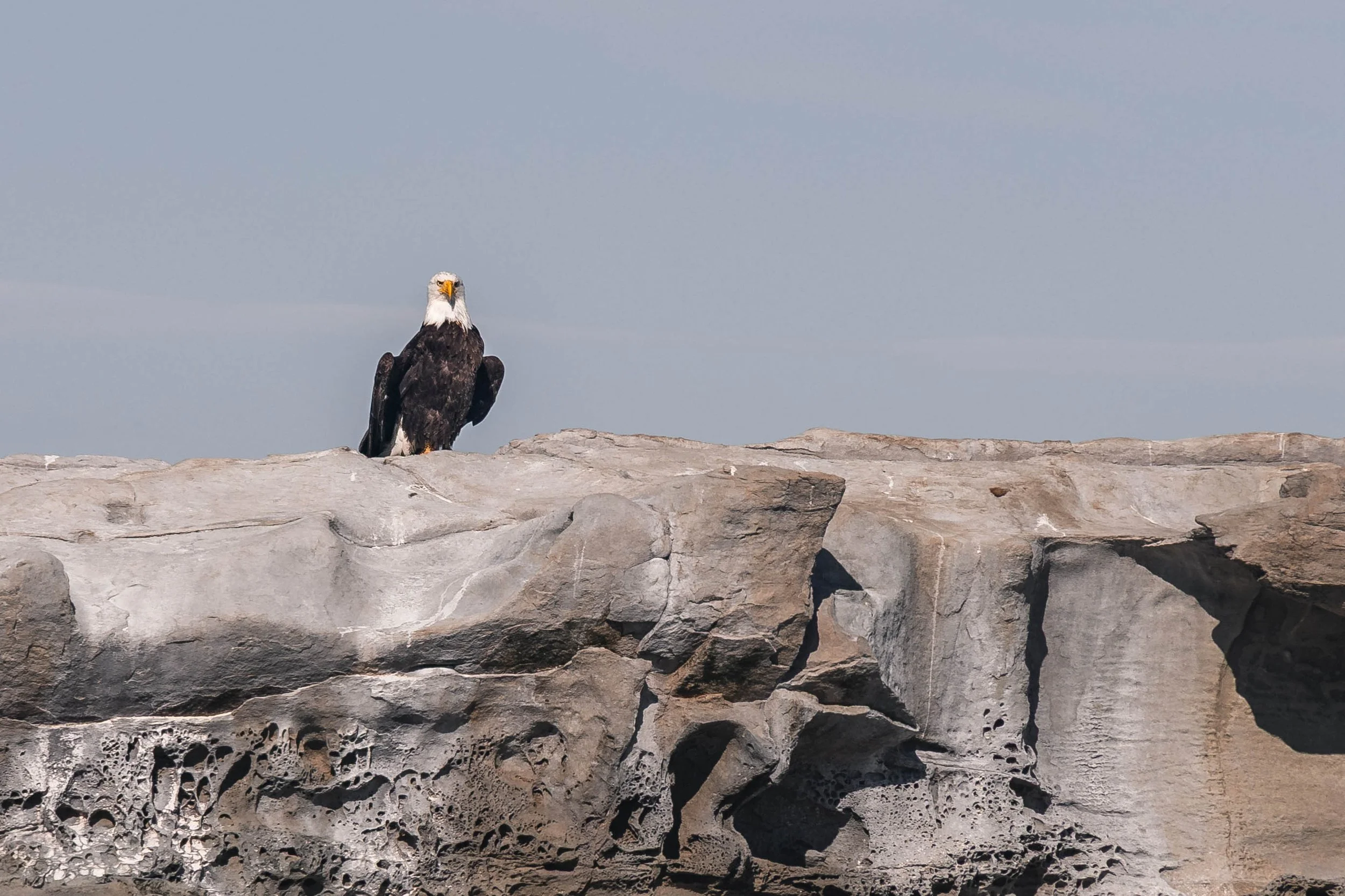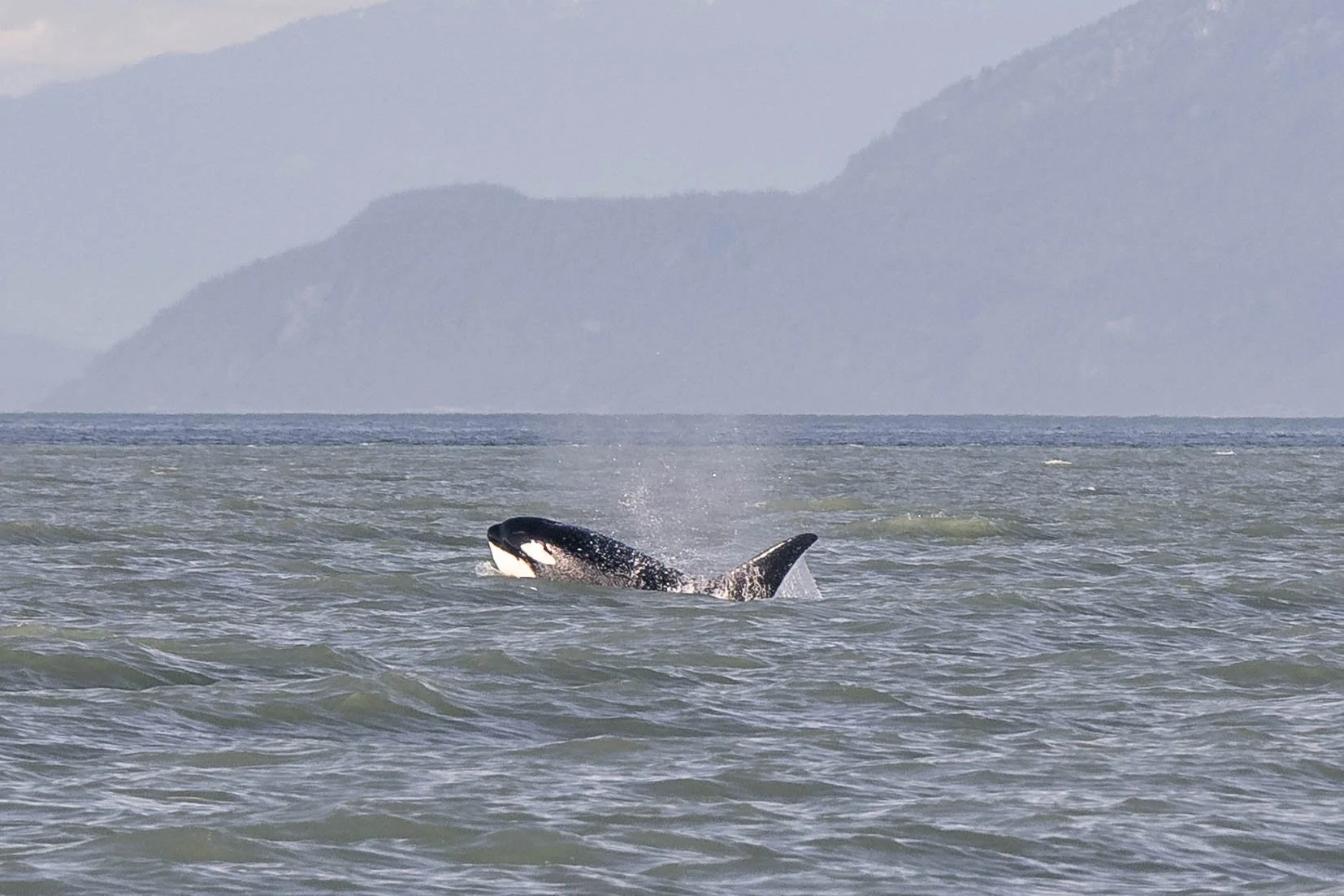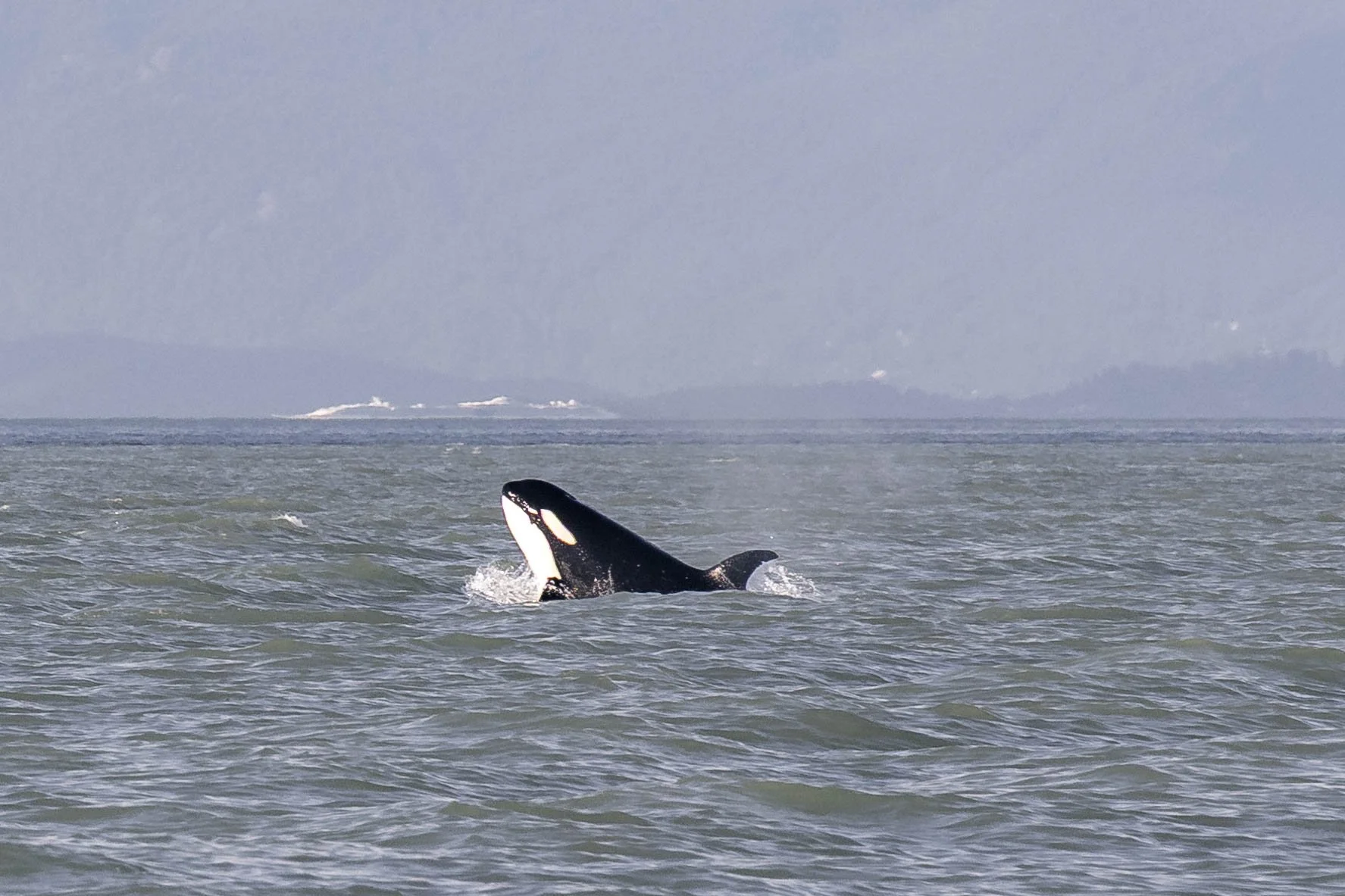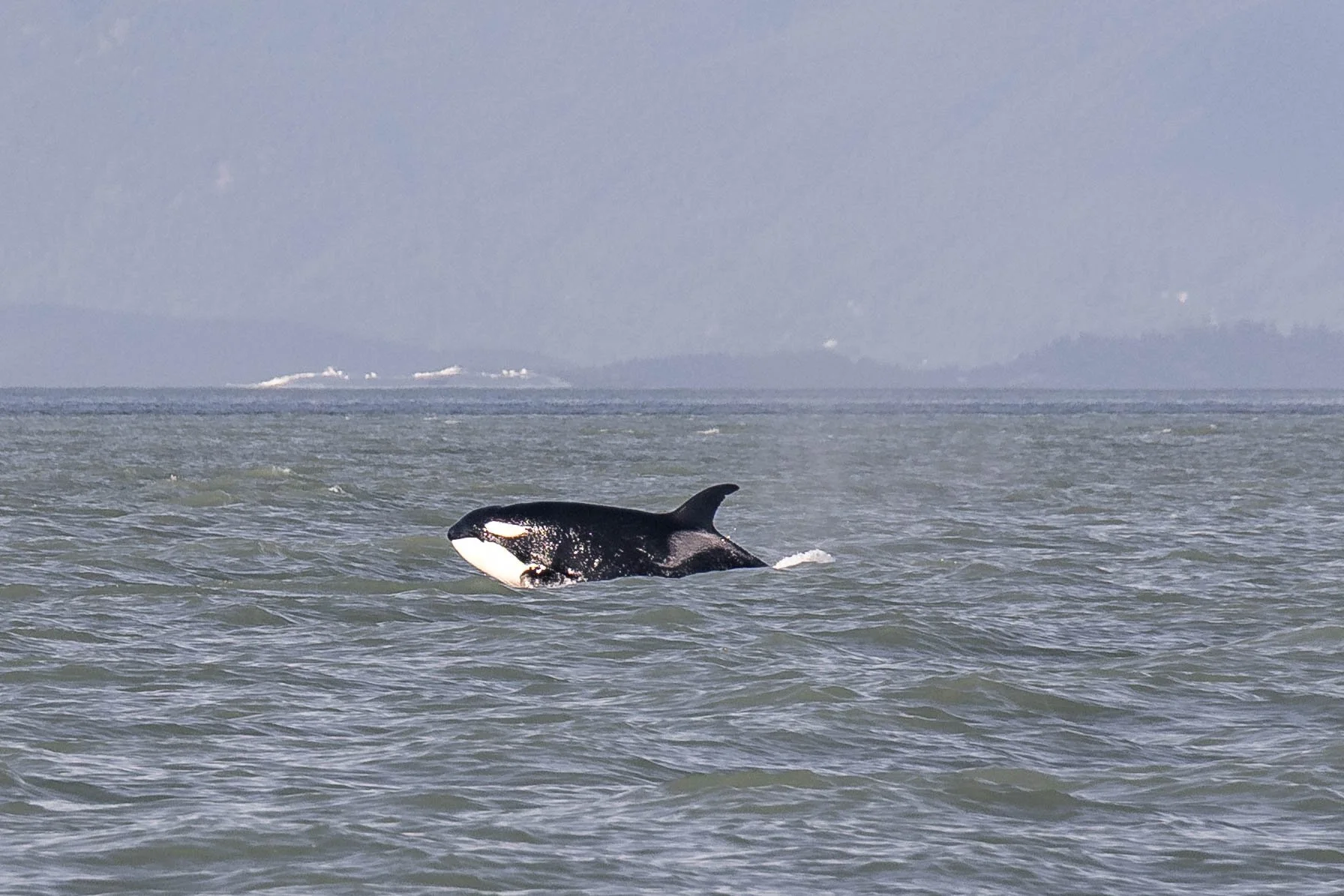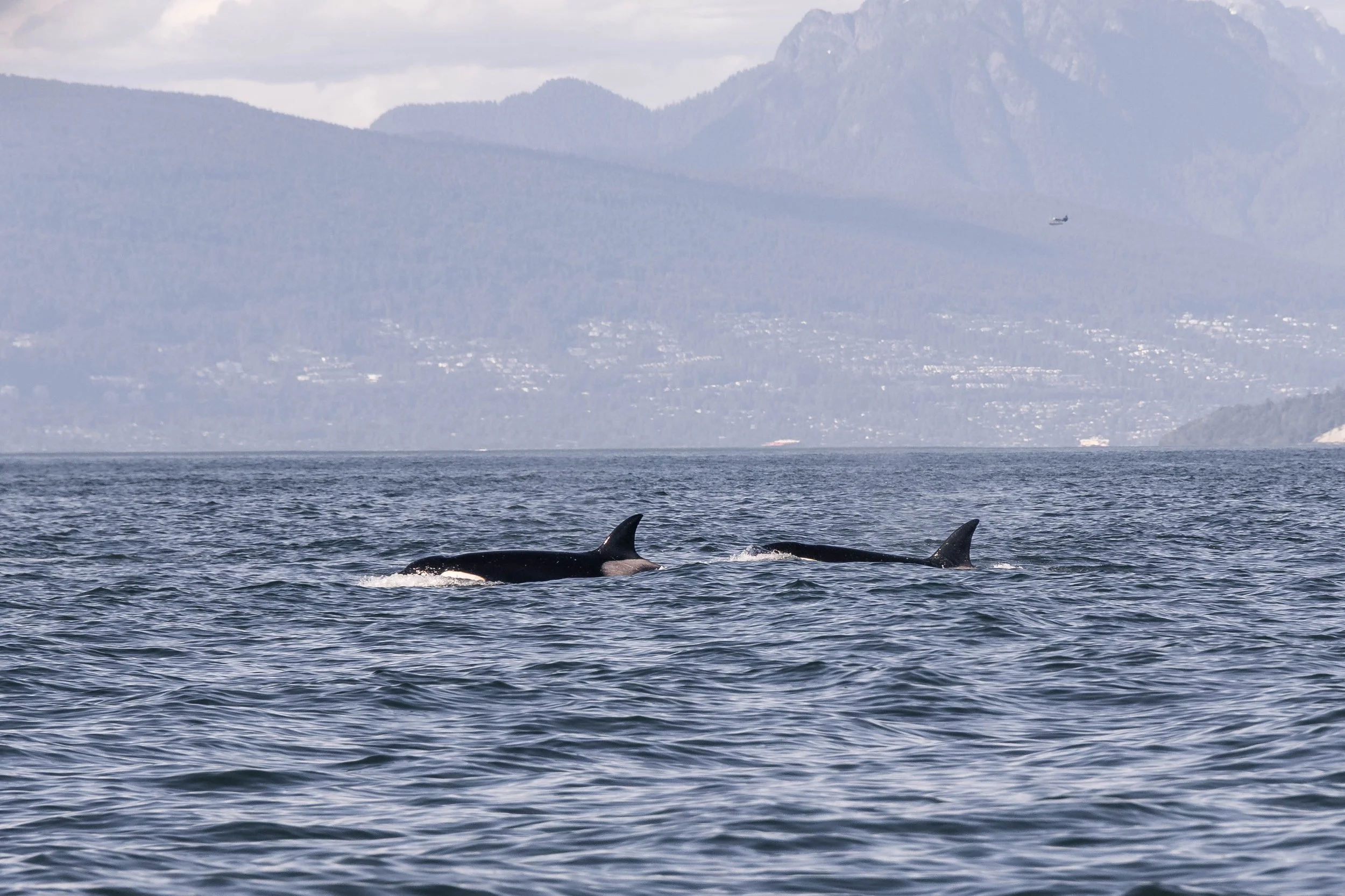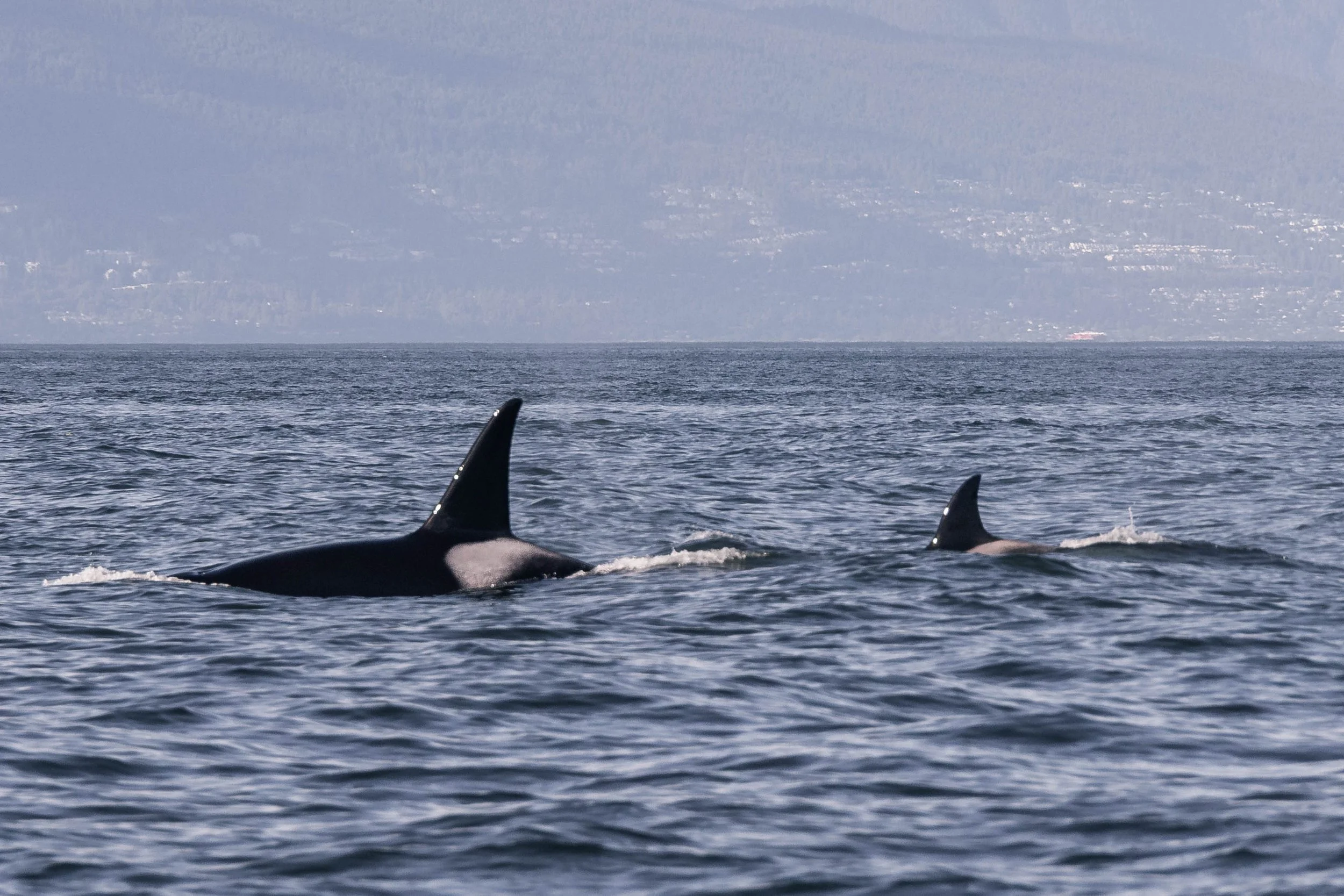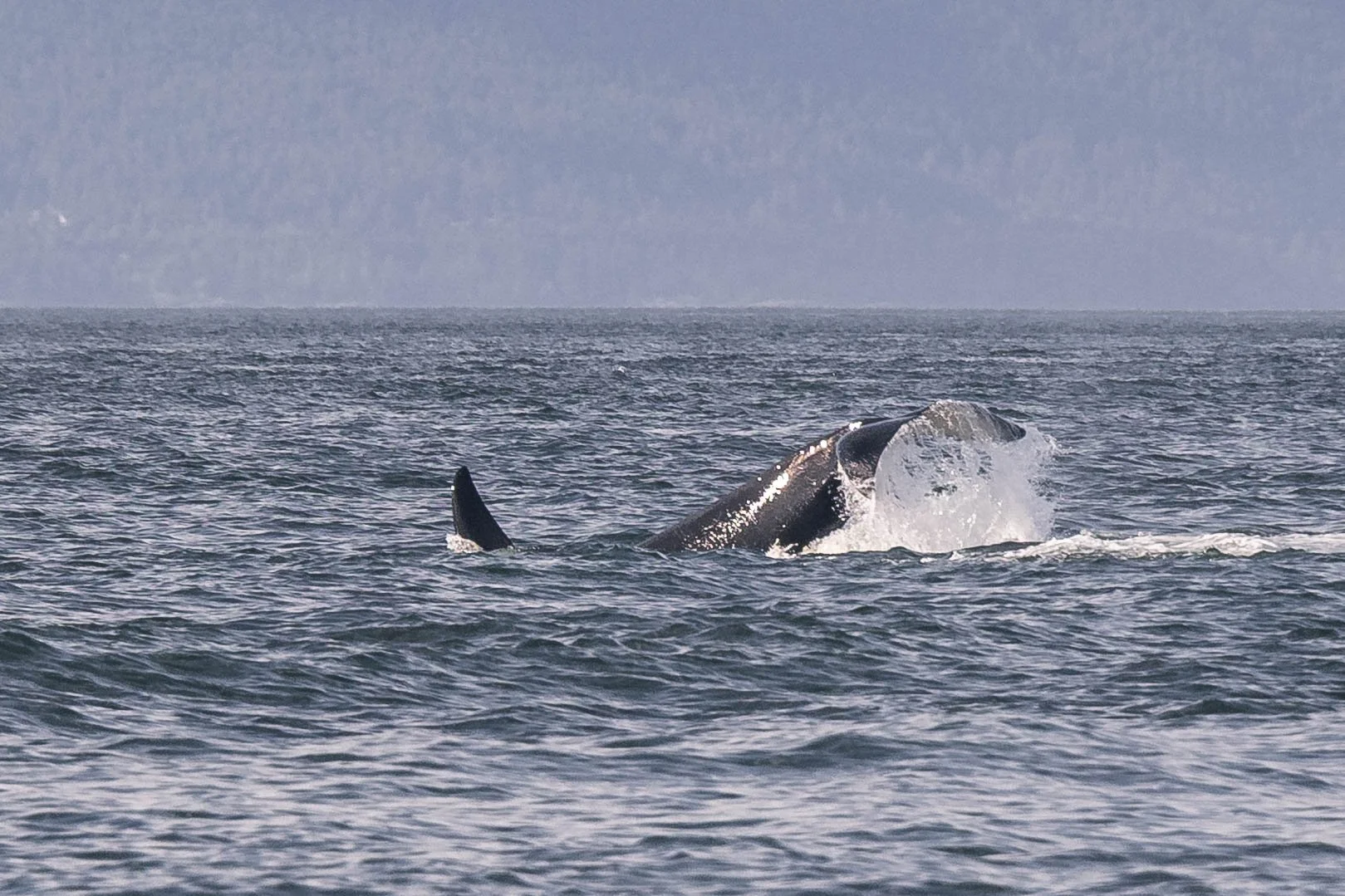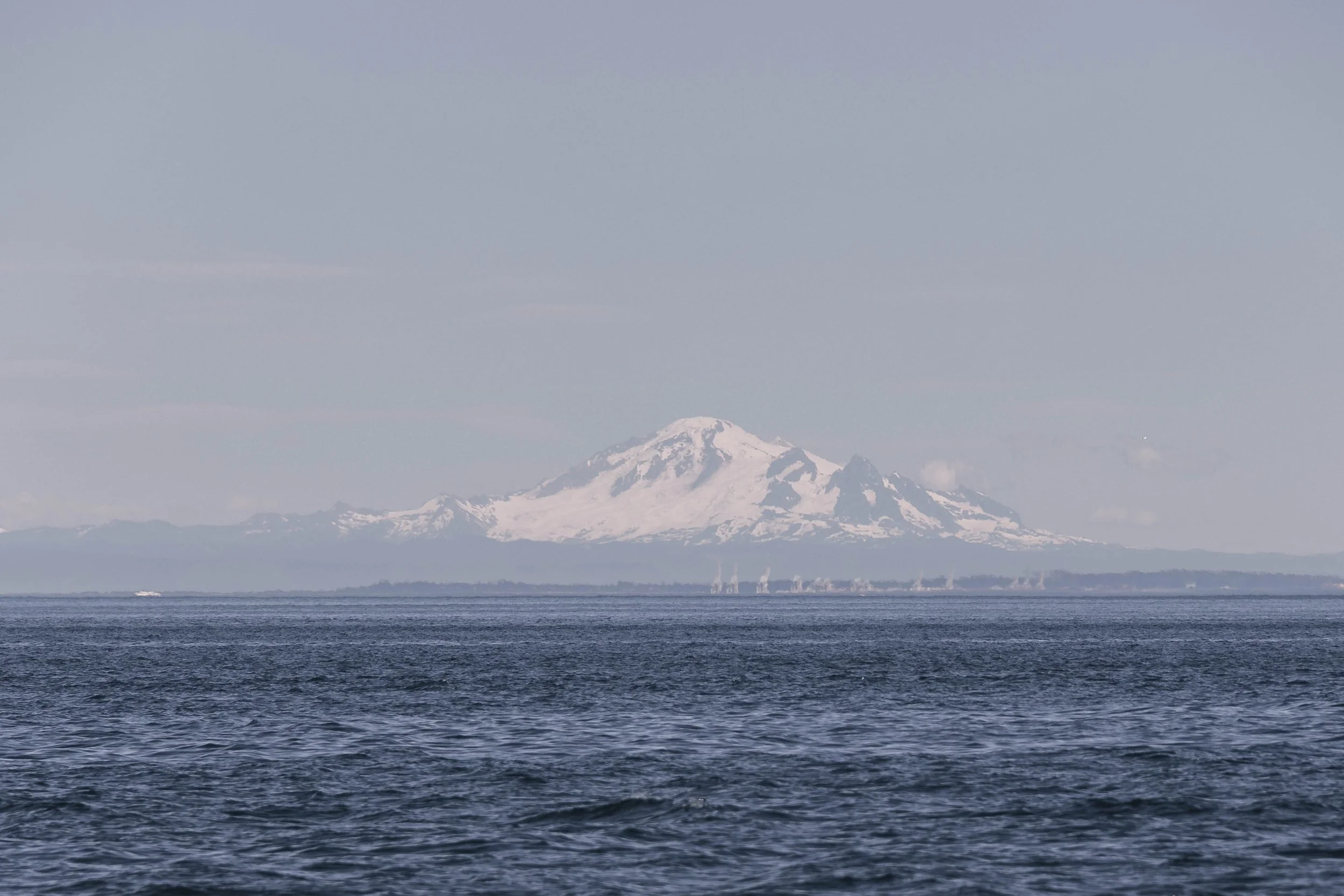July 13, 2025, 3:30 PM - "Snooping" around near Nanaimo, and the T099s by Richmond!
On this lovely afternoon, two of our vessels departed the dock together! Vessels Kula and Keta set out in search of some humpbacks that had been spotted making their way north of Duke Point. Not long after leaving the Nanaimo harbour and passing Newcastle Island, a humpback blow had been spotted in the distance.
Once the humpback threw its tail fluke up, we identified the humpback to be Snoopy (BCY0770)! To confidently identify which individual humpback whale we have, a good photo of the underside of the tail fluke is the gold standard for photo identification. Each humpback whale develops a unique coloration of white and dark areas on its tail. This coloration, combined with damage to the tail, like notches and scratches, allows us to catalogue and compare all humpback whales. Notably, Snoopy has a large notch on the right side of their tail fluke, making it very easy to identify. This damage likely resulted from an entanglement with fishing gear, where ropes from fishing nets or crab traps get caught around the tail flukes of these whales. Humpback whales are particularly vulnerable to entanglement, largely due to their massive size and the coastal routes they follow during migration. When a whale becomes entangled in fishing gear or marine debris, it can suffer deep wounds that risk infection or become so restricted that it eventually drowns. Entanglements and boat collisions are the largest threats humpback whales face nowadays, but historically, these whales have endured much worse.
Humpbacks were once one of the most hunted whale species during the era of commercial whaling along the Pacific coast. Their relatively slow swimming speed and their migration path made them easy prey to commercial whalers. By the time commercial whaling had been stopped in the 1960s and 70s, the damage had already been done. It’s estimated that the northern-pacific humpback population had declined by 90%. Thankfully, protective measures like the Marine Mammal Protection Act have made it illegal to hunt or capture these animals, allowing their populations to slowly recover. Today, regulations such as public awareness, reduced speeds while in the presence of whales, and measures to reduce ocean pollution help protect our humpbacks. Additionally, whale sighting reports are shared with large commercial ships and ferry operators to help minimize the risk of vessel strikes and improve safety for both whales and mariners.
As Snoopy continued northward, our vessel departed south to search for some pinnipeds. Our next stop was a rock outcrop off the outer shore of Valdes Island, dubbed “Stinky Rocks” by those who visit. Those unfortunate enough to be downwind of the Sea lions stationed there get to find out why the rock has this nickname! Since there are so many animals eating, sleeping, feeding, and defecating together on one small rock, the smell is as bad as you imagine it to be!
The Sea Lions hauled out on Stinky Rock are Steller Sea Lions. These are the largest species of Sea Lion in the world! Males reach upwards of 11 feet long and weigh upwards of 2500 pounds. Interestingly, this species displays sexual dimorphism, meaning males and females have distinct physical differences. Females grow to be only one-third the size of full-grown males, reaching around 800 pounds and 8 feet long. The males have developed this large stature due to intraspecific competition between competing males. During their breeding season (Late May to mid July), dominant males will compete and defend a harem of females from other large competing males. Once a male has secured his harem, he will stay on land and defend his group from other males for the rest of the breeding season, meaning that he won’t get the opportunity to feed for upwards of 2 months! But this fast is essential for the dominant male to secure reproductive success.
Nearby, a couple of different pinnipeds were snoozing away - Harbour Seals were nestled together on the kelp-covered rocks. These seals are significantly smaller than the Steller Sea Lions, usually not weighing anymore than about 250 pounds. Harbour Seals are currently in the middle of pupping season, with many mothers and small pups being found along our coastline right now. Unlike the sea lions, males and females of this species look very similar to each other, making it significantly harder to tell their gender from appearance.
After our time with the pinnipeds, our vessels headed southeast, following the Duke Point to Tsawwassen BC Ferry line in search of more whales. Not long into our expedition, our captains got reports of orcas across the Strait of Georgia, west of Richmond. Both vessels ventured east in hopes of getting in on the action. The weather was calm, and the waves were minimal, allowing for easy and fast travel across the Strait. Upon arrival, the orcas had been identified as the T099s!
T099 ♀ Bella ( ~1984)
T099B ♀ Holly (2007)
T099C ♂ Barakat (2009)
T099D ♂ Puck (2015)
T099E ♀ Qwiin qwiin oo qwii la (2021)
These orcas were bursting with energy, putting on an incredible display of surface activity. We observed dramatic breaches, powerful back-dives, explosive tail-slaps, and high-speed porpoising. Killer whales are remarkably intelligent and social creatures, and their behaviour often reflects this. When one individual breaches, it's common to see others follow in a cascade of playful leaps, like a daisy chain of excitement rippling through the group. For Transient orcas to show this kind of exuberance, they need to be well-fed. These transient orcas specialize in hunting other marine mammals, with harbour seals making up around 60% of their diet and harbour porpoises about 30%. Each orca needs to eat upwards of 450lbs of food a day! That’s equivalent to 2-3 harbour seals or 3-4 harbour porpoises. These orca were slowly making their way north, meandering and taking their time as they socialized. When our vessels was out of time with the T099s, our vessels departed the scene and returned across the Strait of Georgia, back to Nanaimo.
Enjoy our photos below, taken by our Marine Naturalists Cheyenne Brewster and Jordan Robinson!
Snoopy’s dorsal fin. Photo by Jordan Robinson.
Snoopy starting a dive. Photo by Jordan Robinson.
Snoopy diving. Photo by Cheyenne Brewster.
Snoopy’s fluke. Photo by Cheyenne Brewster.
Snoopy backlit with Nanoose Bay visible behind. Photo by Cheyenne Brewster.
Sleepy Harbour Seals on the rocks. Photo by Cheyenne Brewster.
Steller Sea Lions lounging in the sun. Photo by Jordan Robinson.
The evening is the perfect time for a nap in the sea lion cuddle puddle! Photo by Cheyenne Brewster.
A large Male Steller Sea Lion popping up from the crowd. Photo by Cheyenne Brewster.
A Bald Eagel perched on the rocks at Stinky Rocks. Photo by Jordan Robinson.
T099E Qwiin qwiin oo qwii la swimming along. Photo by Cheyenne Brewster.
T099B Holly cruising by. Photo by Jordan Robinson.
T099D Puck tail slapping. Photo by Jordan Robinson.
T099C Barakat. Photo by Jordan Robinson.
T099C Barakat with his head above the water. Photo by Jordan Robinson.
T099C Barakat - you can see the brackish waters where the fresh and salt waters collide behind him! Photo by Jordan Robinson.
T099B Holly coming high out of the water! Photo by Jordan Robinson.
A big bellyflop from T099B Holly. Photo by Jordan Robinson.
T099C Barakat catching air. Photo by Jordan Robinson.
T099C Barakat zooming along. Photo by Jordan Robinson.
T099C Barakat excitedly tail slapping. Photo by Jordan Robinson.
T099 Bella and her son T099D Puck. Photo by Jordan Robinson.
T099 Bella and her son T099D Puck - Puck has lots of new scarring in his saddlepatch. Photo by Jordan Robinson.
T099C Barakat and his little sister T099E Qwiin qwiin oo qwii la. Photo by Jordan Robinson.
T099B Holly breaching. Photo by Jordan Robinson.
T099C Barakat was very excited during our encounter today! Photo by Jordan Robinson.
Perfect form from T099C Barakat! Photo by Jordan Robinson.
T099D Puck with his face above the surface! Photo by Jordan Robinson.
Mt.Baker in the distance. Photo by Jordan Robinson.
Entrance Island. Photo by Jordan Robinson.










